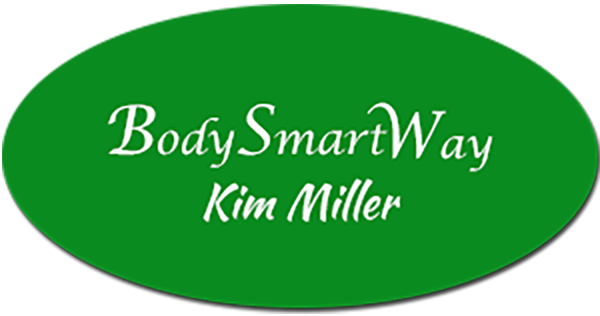by Kim Miller | Nov 28, 2016 | Client Letters, Inspiration, Recovery From Injury, Uncategorized
So happy to post this inspirational letter from a 30 Day to Lean member (a year after our working together):
“I am a 70 year old man enjoying my family, my faith, golf, the beach, gardening, reading, music and yes, food. I have both an engineering master’s degree and an MBA and worked for over 30 years using both degrees. When I married my wonderful, caring wife 50 years ago, I was 6 feet tall and weighed 135 lbs. The thin man days faded away during my working years as I gained 60 pounds, stopped exercising, and slowly but surely took on high blood pressure and cholesterol problems. In 2001, my wife and I retired and moved to Florida where we met Kim Miller, founder of Body Smart. Kim has always encouraged me to eat and work out smartly but, as is often is the case, I had difficulty internalizing her message.
In 2010, on the golf course, my hand went numb. I had suffered a very mild stroke that fortunately left no side effects. I weighed 215 pounds and was taking both blood pressure and high cholesterol meds. I became determined to lose some weight and get more exercise. I tried cutting back on the eating and using the treadmill more. And through my efforts, although a little haphazard, I did lose 15 pounds. So, in 2015 I still weighed 200 lbs and had low energy.
It was at that time that I became aware of Kim’s 30 Days to Lean Program. I thought at the time, this may work for me – a prescribed meal plan with recipes, no mandatory meetings and I’d get some coaching from Kim. So I signed up. Over the next few months I went from 200 pounds to 170 pounds and never felt hungry and always felt energetic. The recipes are appetizing and filling. Even more importantly, on top shedding pounds, my cholesterol and blood pressure numbers are now normal.
Sincerely,
Jack
These kinds of messages inspire me to keep doing what I am doing. Have you sustained an injury and found it tough to get back on track?
It’s never too late to start the process. Read my post on Getting Back Into Shape After an Injury.
And, if you want to find out more about my 30 Days to Lean program, you can go here on my site or reach out to me via email
All my best,
Kim
by Kim Miller | Nov 20, 2016 | Uncategorized

It’s never too late to gain strength. Our bones and muscles have an innate capacity to respond to stimuli by growing in size, density and strength.
Here’s how to smartly begin.
In the beginning stages of a weight training routine, it’s necessary to take 3-4 weeks to learn proper technique while keeping the weights light.
Think of this process as setting the stage for smart progressive gains in strength, muscle tone, and muscle density. Skipping these two factors of proper technique and light weight in the initial stage increases the occurrence of injury. Injury is the number one reason people stop training. Don’t let this be you.
Keep the weight light enough that you can practice good form without any struggle. The temptation to increase the weight amount will be looming, but realize it is the tendons and ligaments of the body that really need sensible conditioning in these opening weeks. Be patient. Be smart.
To Hire a Trainer or Not ?
If there was ever a time to hire a trainer it’s in the opening weeks of a weight training routine. A good trainer will show you what machines to use, how to set them up, and what weight to start with. A really good trainer will help you in those opening weeks to make sense of a routine suitable for you. This should involve asking many questions about your lifestyle, how much time you can commit to exercise, what type of job you have, past injuries, health status, motivation levels, reasons for initiating a strength program and other pertinent information that willhelp develop a plan that is suited for you and you’ll likely implement consistently.
A really good trainer will also add perspective on how best to adhere to the program and will transition you through various aspects of learning to strength train. A good trainer is well worth the money as making sense of the implementation of a strength routine is paramount when considering that most people do not continue a strengthening program for longer than a few weeks.
Going It Alone?
If, for some reason you need to begin a strength program on your own, most gyms have attendants that can show you how to use the machines. There should be no cost for them to show you how to set up each machine. If you never strength trained before in your life, and you will be training on your own, have the gym’s attendant or preferably a personal trainer show you these five exercises.
Getting Started On Your Own
Leg Press– press through the heels and keep head back.
Latissimus Dorsi Pull Down-keep chest upright throughout and lean slightly back.
Chest Press– keep head back and engage chest muscles to press.
Seated Shoulder Press With Dumbells – back supported and palms facing in.
Standing Bicep Curl Against Wall– knees slightly bent and stand against wall for support.
Repetitions and Sets
Practice 15 repetitions of each exercise in the order as desribed above. Repeat this cycle one more time. Practice slowly and deliberately and use a light enough weight that 15 repetitions are not a strain.
How Often
Practice this routine 2-3 times a week for the first three weeks preferably having a day or two off in between. Increase the weights by no more than 15% each week. Remember, your goal in the opening weeks is to practice good form and allow your tendons and ligaments to get adjusted to the increased workload to come.
When you leave the gym you should feel like you could easily continued doing more. Don’t be tempted to increase your weights, repetitions or sets. This is a mistake that will ultimately increase the likelihood that you will dread going to the gym your next session. We are not just training our bodies, but we are also training our minds. It’s a process of adjustment and by honoring this you’ll increase the likelihood of making strength training a lifelong habit.
All My Best,
Kim
by Kim Miller | Nov 8, 2016 | Uncategorized
|
I received an email a few days ago from a former 30 Days to Lean member that lost 27 pounds and had kept it off for over 6 months, that is, up until now.
She writes and says the following: “I’ve had 2 months of social eating, drinking and basically having a really good time. Honestly, I do not regret any of it.
But…I gained 6 pounds and was feeling terrible about myself. I had no energy. My clothes were tight. And I had zero motivation to get back on track. But I did it anyway.
I am writing to you so that you may share my experience with others in the hopes of helping them. But please do not use my real name.
Here’s what I did to get myself back on track. I hope it helps others. Lifestyle changes are rarely linear. I realize this now and this is in great part why I was able to get back on track. Here are the changes I made. And by the way I lost 2 more pounds on top of the 27 pounds I lost!
What I Did
1. I increased my vegetable intake dramatically. And to tell you the truth I did not do it right away. What I did right away was increase my protein. This was a mistake. I realized that the old style dieting had come back into my mind after gaining the 6 pounds -you know where you just eat a bunch of meat and get rid of sugar and flour? I know this was wrong but I quickly remembered what you said about increasing vegetables as a critical factor in not just weight loss, but in staving off diseases and feeling healthy and well. I stopped eating non stop chicken and other meat and got back to lots of vegetables with some protein, and some good fat. It was amazing how in a couple days, I felt completely felt well again. I don’t know why this surprised me but somehow it still does.
2. I switched my milk lattes for coconut milk lattes. It was no problem at all. My face stopped breaking out from the dairy and I became less lethargic. Again, I did this before and felt great, why did I stop? Creature of old habits. I am learning how to outsmart myself though. After day 1 of my switch I got back to run/walking in the neighborhood.
3. I became aware that I was feeling a little depressed. I already knew I was stressed, but the combination of bad food, no movement really had me
thinking negatively. I was especially hard on myself and was really beating myself up. This was never part of the program. I know that the more we beat ourselves up the worse we become, so I just replaced the bad attitude with a few simple actions. They sound easy and pathetic, but it got the ball going again. I took five minutes in the morning to make myself a shake. I let myself have one cup of coffee in the morning and I drank 16 oz of water then I told myself good job!
As I continuously became nicer to myself, I started feeling better and when I started feeling better, it was easier to make better decisions.
4. I made a commitment to make the very next meal a great one. When I realized I no longer wanted to feel this way, I went to the store right
then and got the ingredients for my favorite salad. I didn’t waste my time thinking, oh I don’t feel like making this or it would be so much
easier to just grab something.
I made the very next meal a great choice. I was surprised at how much better I felt and how much
motivation I felt after just one thing: making the very next meal a great one. I really enjoying eating once again, but it’s the kind of eating that just makes you feel good about your life and not just while you are eating it at the time, as in potato pancakes or chicken and dumplings.
5. I began my morning ritual with what I know works every time: My shake. I had gotten back into a routine with absolutely no time in the morning and I was skipping breakfast or grabbing a protein bar loaded with sugar and I just became tired of setting myself up for disaster and had enough. Eating breakfast, especially the shakes helped me lose 27 pounds and now 2 more.
I realize that I am not the only one to get off track. I just wanted you to know that the way you helped me connect with becoming healthier in the real world has made a huge difference in my life. I may get off track again, but I know how to get back at it and for the most part be healthier and happier. I hope this helps your members.
Krista
All My Best,
Kim
|
by Kim Miller | Oct 27, 2016 | Uncategorized
Strengthening our muscles requires more than just varying our exercise routines. Maintaining and increasing our strength requires that our muscles recover from a tough workout. Recovery from a tough workout is all about getting the right combination of rest and movement to circulate blood, yet not so much activity that we are implementing a new challenge to the body. Below are three interesting ways to let your body rest so you may become stronger.
1. Hot-Cold Therapy

Hot-cold contrast therapy is a method for rapidly flushing blood through the body. This is because immersion in cold water removes blood quickly from the limbs (and carries waste products from training away along with it) and immersion in warm water brings new blood back in. This accelerates the circulation of blood through the body. The problem is that most people have neither the means to access hot/cold baths nor the desire to do these types of regimens. Fortunately, there is a way to get the benefit of hot-cold contrast treatments for specific parts of the body. You’ll just need a good old-fashioned hot water bottle and wet washcloths.
- Put the washcloths in the freezer until they are frozen. Hang them on the door of your freezer so it freezes flat or place open flat on the racks.
- Once the cloths are frozen, put hot water in the hot water bottle
- Place the frozen cloth on or around your desired area of treatment for five to eight minutes
- Put the used frozen cloth back in the freezer and put the hot water bottle on your body part for five to eight minutes.
- Place the second frozen cloth on or around your desired area of treatment for five to eight minutes.
- Repeat step 4 and keep switching the cloths back and forth for several cyles.
3. Sleep – No Guilt

During sleep our body releases hormones designed to enhance our ability to recover from work. People vary in how much sleep they need, but research suggest that most of us require 7-8 hours of sleep. When I am in training for more vigorous tennis play and have a particularly hard day/week of training I love to sleep 9-10 hours! I know it’s not too cool to admit I enjoy sleeping this much, but it’s how my body recovers best.
For those who can’t seem to get to bed early enough to get the required amount of sleep, know that contrary to popular belief, you do not need to get all of your sleep in dose. What seems to matter as much for health and recovery as the total amount of sleep is the number hours of continuous wakefulness. Meaning, if you’re up for a high number of hours continuously, your body will be less than pleased. I love this as naps are my favorite pastime on the weekends after long hours on the tennis courts. Tip: Have no guilt for sleeping and utilize nap time as a way to get in your required sleep amount that is perfect for you.
3. Move and Have Fun/Enjoy

Movement brings blood flow for healing. But do not think of movement in the traditional sense such as, in a gym; And do not think of healing as in the case of injury. Rather, think of “fun recovery” from a good workout as healing the body and soul so that you may recover and get even stronger! Fun movement that you enjoy doing and that is not too physically demanding actually helps healing while immobility usually prolongs recovery and delays healing. Think fun. Think enjoyment. For me that means being outside riding bikes, walking with my husband, walking with the pups, or tossing a frisbee on the beach! And what about you? I would love to know!
by Kim Miller | Sep 15, 2016 | Uncategorized

Who Get’s Hip Pain?
Hip pain is a common problem for both ultra active people and sedentary people. It is the extremes of living at both ends of the activity spectrum that gets us into trouble with hip pain.
Chronic pain is a sign that there is irritation or injury at a site. There are a multitude of conditions that can cause hip pain, from trochanteric bursitis to osteoarthritis. The great news is that movement is the solution for many of these conditions.
When I have personal training clients with hip pain I often see that they are overly active/run/ walk/bike 40 miles a week or more, or are living a sedentary lifestyle sitting for many hours at a time. It’s hard not to be sedentary a lot of the time in today’s world. As I sit here and type this newsletter, I am sedentary. My hips are folded and collapsed as I slightly round my lower back and hunch my shoulders forward to type. If I were to stay in this position like many office workers do for extended periods of time, I could expect hip pain, and back pain to eventually creep into my daily life.
I once had hip pain so excruciating that I had given up all activity except light stretching for several weeks and then finally more movement based training as the inflammation subsided.
Though chronic hip pain is frequently improved through movement training, other causes of hip pain can be caused by serious injury. Make sure you see a doctor first if the pain is substantial.
Three Common Causes of Hip Pain
1) Chronic Sitting
The average American sits 13 hours a day. This staggering amount of inactivity causes an imbalance of the hip musculature. The hip flexors remain in a shortened position, while the glutes and deep hip rotators remain elongated. Add to that chronic dehydration and the result is tissue that more closely resembles beef jerky than healthy muscle tissue.
This tissue lacks the necessary flexibility and elasticity to allow for smooth and efficient movement. It tears more easily and becomes overstressed more easily, and the rigidity of the tissue leads to more rubbing against bone and bursae.
2) Strength Imbalance
A strength imbalance is not the same as tightness or in-elasticity. A strength imbalance occurs most often when one’s exercise regimen is consistent and unvaried. Runners are an excellent example of this type of athlete. Whether running 12 miles a week or 45 miles per week, runners often feel like they don’t need more or different exercise. The repetition of the same movement without variation builds strength in some muscles, while neglecting others. This imbalance puts an unnatural amount of strain on those muscles, resulting in overuse injury.
3) Skeletal Imbalance
Skeletal imbalance refers to the uneven stature or movement pattern that many people demonstrate, which can be caused by so many things, including old injuries and leg-length discrepancies. When movements are not even or balanced bilaterally, one side will be the victim of added pressure, tissue friction or workload. These clients often fall victim to conditions such as bursitis or piriformis syndrome.
Fortunately, the fix for many of these hip issues can be found in the right movements.
Fix: Mobility
The best fix for immobility is mobility. Focus on improving range of motion of the hip flexors and hip rotators with gentle dynamic movement. For example, bodyweight squat and lunges.
| You |
Bodyweight Squat Variation |
Bodyweight Lunge Variation |
Bodyweight Deep Hip Opener |
| Healthy and strong |
Wide, deep squat |
Walking lunges |
Walking lunge with contralateral Rotation |
| Healthy intermediate |
Wide squat |
Walking lunges or split-stance squat |
Suspension trainer deep squats |
| New or older exerciser |
Suspension trainer and/or box squat |
Modified split-stance squat |
Body-weight deadlift |
| Injured exerciser |
Pain-free: suspension trainer and/or box squat |
Pain-free:
split-stance squat |
Pain-free:
Body-weight deadlift |
Fix: Elasticity
l
In my personal training business I aim to improve the elasticity of that beef jerky-like tissue by giving my clients stretching homework as well as weight loaded exercises to do daily between sedentary periods of time. Two to three hours of movement each week is not enough to undo 100+ hours of inactivity each week. My homework assignment for clients often looks like this:
| Daily |
Static stretch shortened muscle tissue for more than 60 seconds at least once daily. |
| Hourly |
Stand up and perform 10 bodyweight squats or chair sits every hour to get the muscles working and moving. |
| Nutrition |
Drink water all day. If you are well-hydrated, the hourly movement will pull water into the muscles, turning the jerky back into elastic tissue. |
Fix: Strength
I like to tell my clients not to underestimate the importance of pure strength. Improving the overall strength of various types of lifts and squats can be a great contributor to regaining skeletal balance and achieving strength balance. Getting back to basics is often the best medicine. I believe that strong is good. And I also believe that contrary to some movement professionals that machine weights vs free weight/ body weight exercises can be tremendously helpful in conditioning the muscles to move in various planes safely while increasing the strength of the muscles and joints.
With any injury, use pain as your guide. If a movement hurts, don’t continue. And realize that sometimes small aches and pains do subside as you continue in a movement. If you are ever unsure, just give me a call, email or text and I’d be happy to help you make sense of it.
All My Best,
Kim







